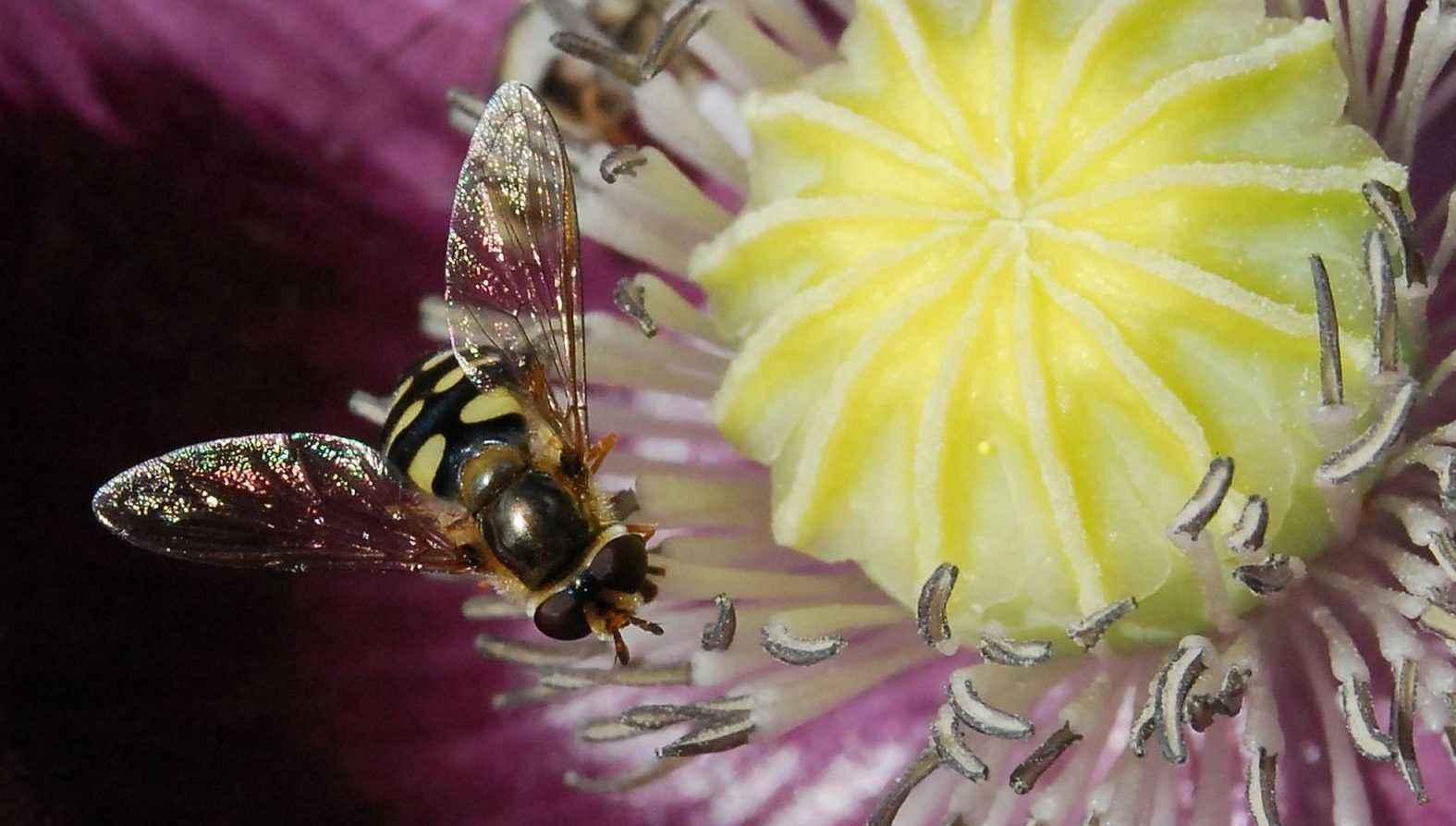
Making an Insect Hotel - Tutorial
to attract beneficial insects, provide them with shelter and food
Contents
An insect hotel is a structure that provides “homes” or refuges for beneficial garden insects and pollinators facing housing shortages, while optimising space.
It can host solitary bees (osmia) that will pollinate your vegetable garden, as well as lacewings, hoverflies, rove beetles, ground beetles, earwigs (forficula), parasitic wasps and pemphredons that will happily rid your garden of pests like aphids, scale insects, slugs or snails.
You can simply install ready-made nest boxes, shelters or other cabins or “insect houses” available commercially. But you can also very easily build your own insect habitat. Custom-made, it will give you the satisfaction of DIY and, since it’s made entirely from recycled materials, this insect hotel is eco-friendly and free.
For our build, we didn’t follow any paper plans – just a great idea in our heads! Follow this detailed tutorial to learn how to make an insect hotel, what to put inside, where to position it and how to orient it properly.
Where and when to install an insect hotel?
Position your insect hotel so that its “front” faces south or south-east, ensuring it catches the morning sun. It should be sheltered from prevailing winds and close to an area abundant with melliferous flowers (which attract pollinating insects). Avoid direct contact with the soil to prevent moisture rising.
You can install your insect hotel at any time of year, but don’t worry if it isn’t immediately occupied. It takes time for insects to discover it. Over the years, increasing numbers will colonise this habitat.
The necessary equipment
You can choose to use only recycled materials (as shown here) or, if you’re the DIY type, build a compartmentalised wood insect hotel.
To build this hotel, you will need:
For the structure:
- hollow or solid bricks, depending on what you can find,
- wooden pallets or planks,
- roof tiles,
- a piece of plastic or waterproof sheeting (facultative),
- a good drill.
For the filling:
- logs about 20 cm long, pre-drilled with several holes of different diameters (from 2 to 10 mm)
- hollow stems (bamboo, reed),
- stems with pith (elder, bramble, rose, raspberry…),
- straw, wood fibres or pine cones,
- clay soil (argile) + a little water,
- dead wood, pieces of bark,
- one or more wooden boxes (small wine crates for example),
- broken terracotta pots,
- hollow bricks, stones…
Creating an insect hotel, step by step
1) The Structure
Our insect hotel measures 45 cm deep by 1.20 m wide, but you can adapt the dimensions based on the materials you have available. These measurements were chosen according to the size of the pallet we had, which we simply cut to achieve an adequate depth.
To build your hotel, start by placing hollow (or solid) bricks on a stable and as level a surface as possible. Arrange them according to the size of the insect hotel you wish to create. On top, place a pallet (cut it if needed) or wooden planks, which work perfectly well. In this example, we later used planks instead of another pallet.
Remember to place bricks on the sides, back, and centre to distribute the weight evenly and ensure stability.
Alternate between bricks and pallets (or wooden planks) like a lasagne, building up to your desired height. Check the levels after placing the first pallet—this will make stacking the next layers much easier.
For stability, avoid building too high—our hotel doesn’t exceed 60 cm (including the tiles). Also consider aesthetics and maintain reasonable proportions to ensure it fits well in your garden.
Finish with a wooden layer, ensuring a slight slope so water drains properly (the back should be higher). Optionally, add a piece of plastic sheeting before placing the tiles. No cement is needed—the weight of the structure keeps everything in place!
Inside the pallet, we inserted plywood panels cut to size for a snug fit. This prevents direct contact between the filling materials and the bricks below, reducing moisture absorption.
Once the structure is complete, it’s time to fill it.
2) Filling the Compartments
- Wood and Bark
To attract ground beetles and rove beetles, fill one compartment with a mix of dry wood, twigs, and moss.
- Straw and Broken Pots
Another compartment should hold broken terracotta pots and dry straw for earwigs and hoverflies.
- Drilled Logs
Drill holes (2–10 mm diameter) into logs—the depth of the drill bit is sufficient. These drilled logs will attract solitary bees like mason bees.
- The Hollow Stems and Pith Box
For this section, you’ll need a wooden box, clay-rich soil (or loam), and water. Mix into a thick mud and line the box’s base. Once dry, it will hold stems in place and seal bamboo ends (if they lack nodes). Insert stems into the mud until the box is full. This will attract digger wasps and micro-wasps.
- Hollow Bricks
The hollow brick structure shelters lacewings and others. If using solid bricks, add a few hollow ones in one compartment.
Materials like logs and stems can be reused by insects for several years.
Building an insect hotel is a fun, educational activity—get the kids involved!
The expected tenants in our holiday cottage
1) Honeybee
Honeybees and solitary bees are responsible for most pollination in the garden. The latter are active early in spring, like bumblebees. It’s essential to have a well-flowered garden with early-blooming plants to encourage them to settle in your garden and subsequently help pollinate your vegetables. Some have their preferred flowers, depending on the bee species. They often struggle to find food sources in late winter. To support them, plant early-flowering species: Cornus mas, winter honeysuckle, heathers (Erica), mahonia, … And to help them overwinter, install logs drilled with 2-10mm diameter holes (note: holes must always be closed on one side).
Osmia bees are solitary species suffering acutely from housing shortages! They appreciate logs with 8mm diameter holes or equivalent hollow stems.
2) Pemphredon
Pemphredons are small black wasps that capture numerous aphids to feed their larvae. These beneficial insects create larval chambers in stems with soft pith or hollow stems, partially decomposed wood, or galls.
3) Parasitoid wasps (Aphidius)
Very small and discreet, these micro-wasps are highly effective cleaning allies. They can wipe out an aphid colony in no time. The adult female lays eggs in or on the egg, larva, pupa or adult of its victim. Once hatched, the larva consumes its host from within. Adults feed on flower nectar, so a highly melliferous garden will attract them. They particularly like umbellifers (Apiaceae) and Asteraceae (chicory, dandelion, artichoke…). To help them overwinter, provide stems with pith: bramble, raspberry, rose, elder where they can nest.
4) Earwig
Earwigs, also called forficula, prey on numerous insects including aphids, insect larvae, mites… They seek darkness and humidity. Flat stones and pine cones placed at height make excellent shelters. You can also move terracotta pots filled with straw or damp hay around as needed.
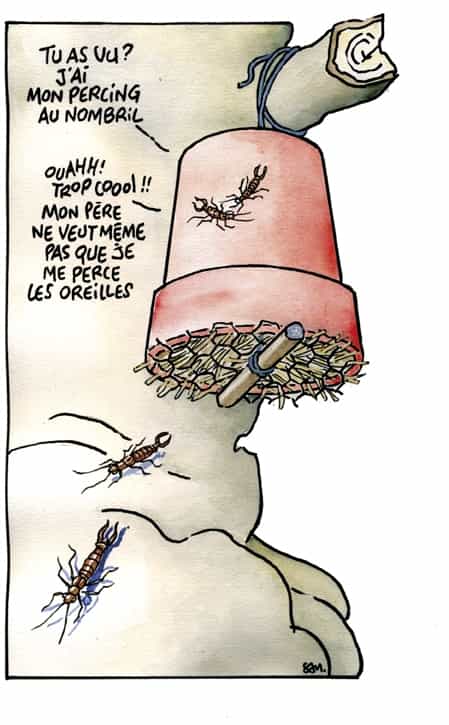
(photo: www.initiatives-fleurs.fr)
5) Hoverfly
Recognisable by their yellow/white and black striped abdomen. Adults feed on nectar while larvae can kill up to a hundred aphids per day. They also enjoy scale insects. To encourage them in your garden, sow flowers in your vegetable patch and let some vegetables flower like dill, celery, chervil, carrots, parsley, etc. Like micro-wasps, these small flies particularly appreciate umbellifers. Hoverflies – whether larvae, pupae or adults – can overwinter well protected under mulch or ground cover. In your insect hotel, provide overwintering shelters like a box filled with straw or bundles of hollow stems.
6) Rove beetle
Rove beetles are elongated black beetles. They are predators of molluscs, slugs and insect larvae. They’re often victims of garden machinery. Create small refuges for them: stones, tiles, piles of plant debris.
7) Lacewing or “Golden-eyed fly”
Also nicknamed the “lion of aphids”, a single lacewing larva can consume 200-500 aphids. Lacewings or golden-eyed flies prefer to overwinter in buildings: garden sheds, garages, attics… but if your garden is far from any structures, it’s important to provide natural shelters like hollow trees, hollow bricks, dry stone walls or a box filled with straw or corrugated cardboard rolls.
8) Ground beetle
Ground beetles are formidable garden predators, especially at night. They overwinter as adults and come spring, they’re hungry! They’ll make quick work of young snails and slugs. Like rove beetles, they’re often victims of lawnmowers, strimmers, tillers and other machinery. Leave wild areas where they can find refuge (long grass, mulch, stones, old stumps…). In your insect hotel, add pieces of wood and bark.
We’ve deliberately omitted ladybirds, bumblebees and butterflies which rarely inhabit insect hotels. To encourage their presence, leave wild corners with leaf piles, stones or dry stone walls, a hollow tree, a nettle patch – a true reservoir of beneficial insects offering both shelter and food. Favour flowers like borage, nasturtium, comfrey, lavender, dandelion, lungwort, clover and early-flowering trees like willow. Ladybirds may occupy uncleaned bird boxes to overwinter.
Photo credits:No.2: www.bwars.com –No.3: Wikipedia –No.6: www.entomart.be –No.8: Pinterest
Useful resources
To go further:
- Insect Hotels and Shelters by Vincent Albouy
- Garden Helpers! from Terre vivante editions
- Leaving Natural Shelters for Garden Wildlife
- Beneficial Organisms for Plant Health
- Ladybirds, Primroses, Tits from Terre vivante editions
- Discover our selection of 8 Most Melliferous Climbing Plants
- Subscribe!
- Contents

































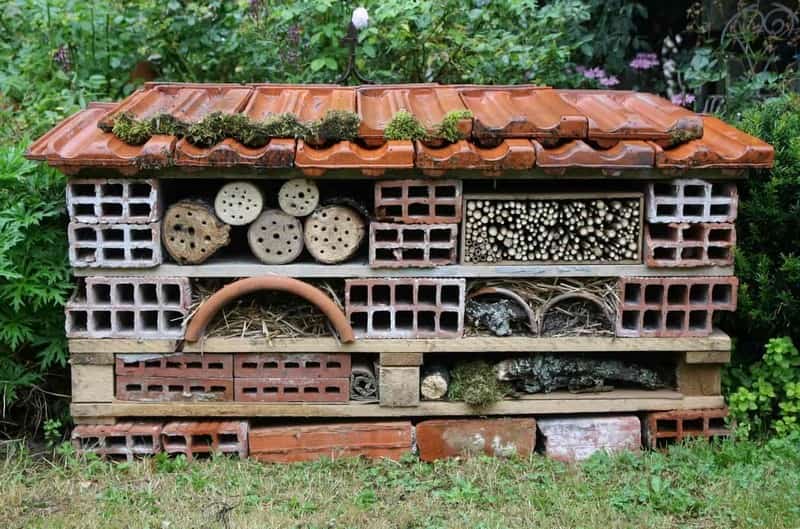

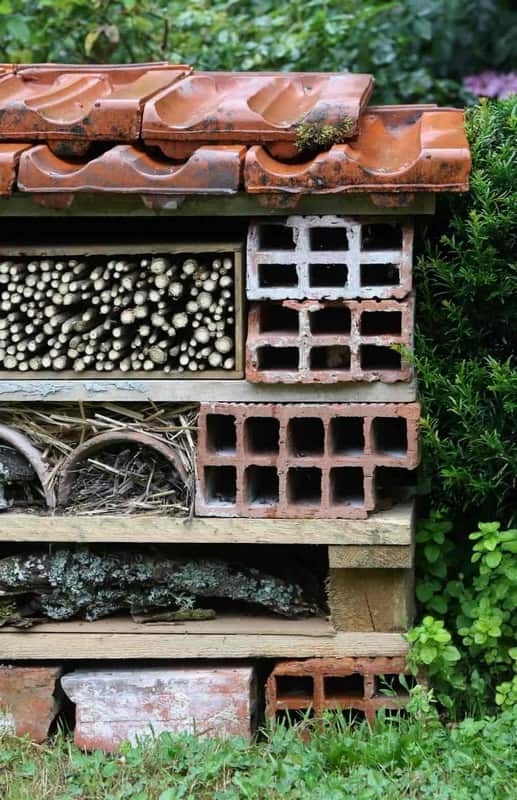
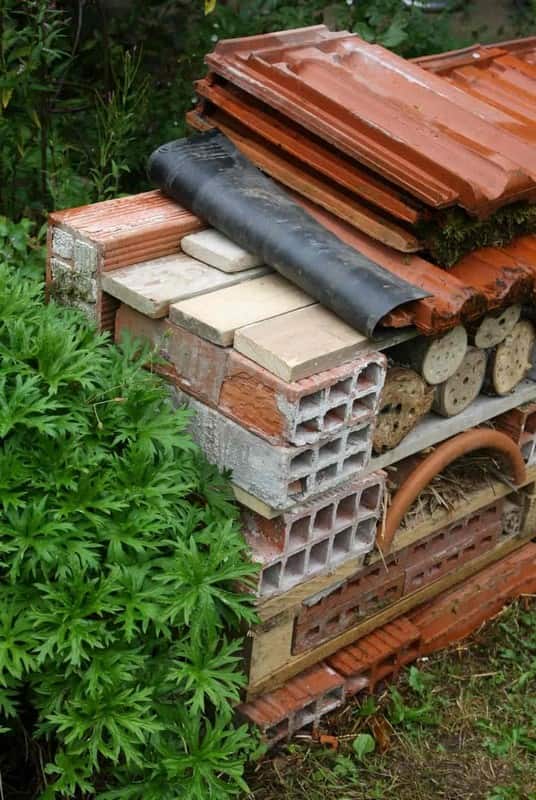
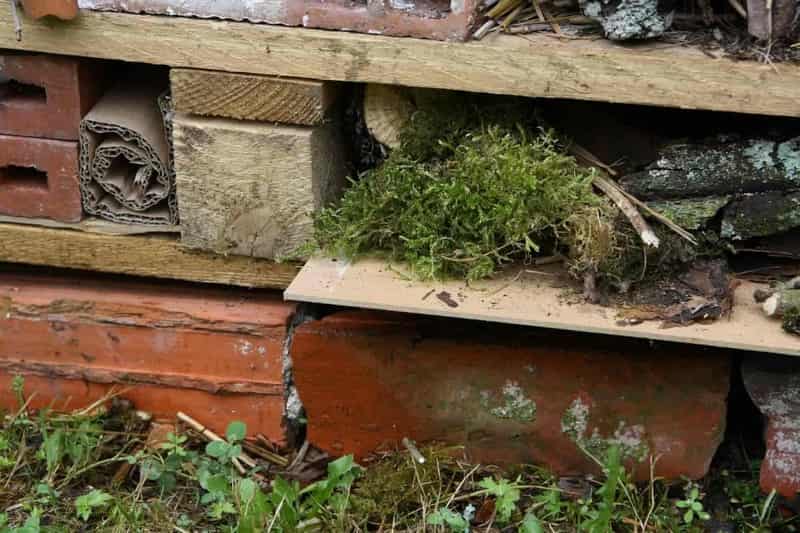
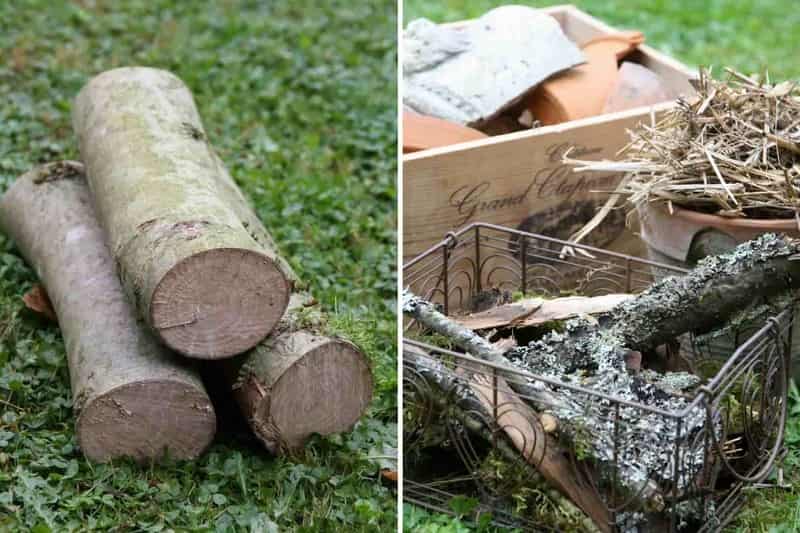
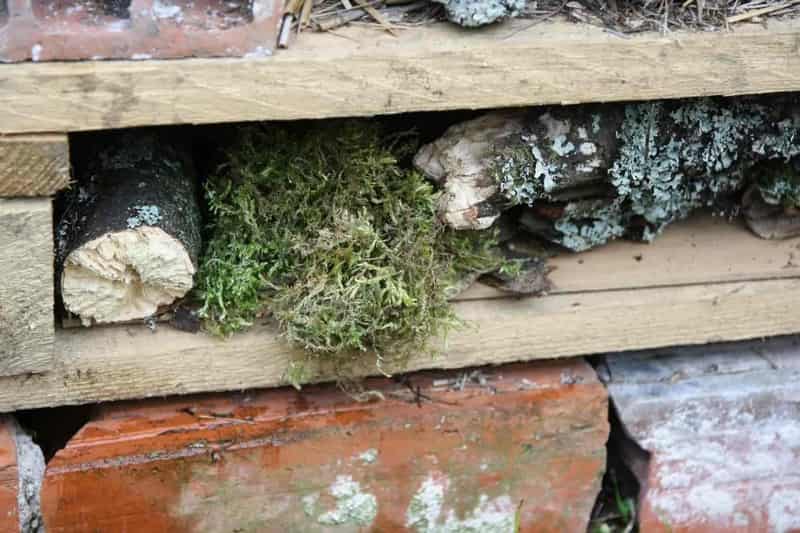
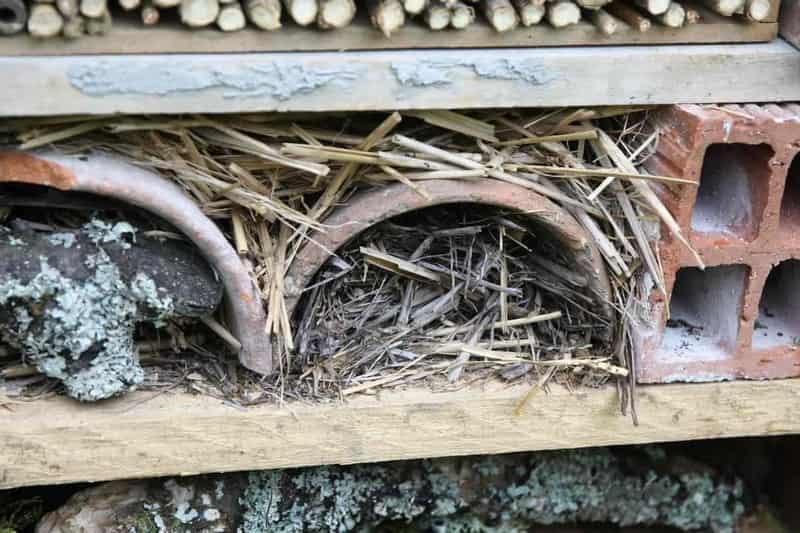
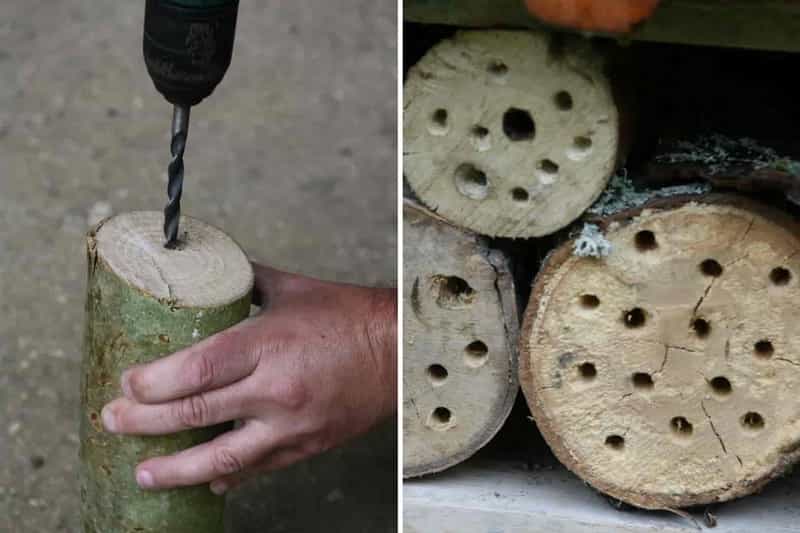
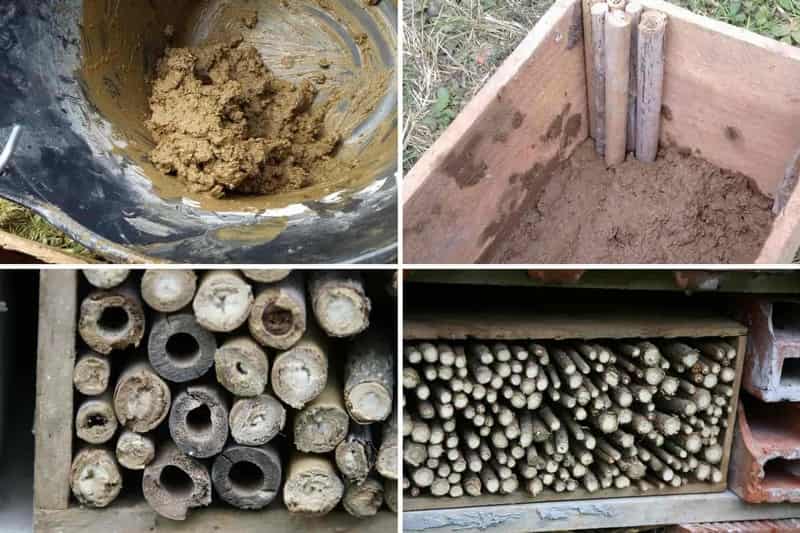
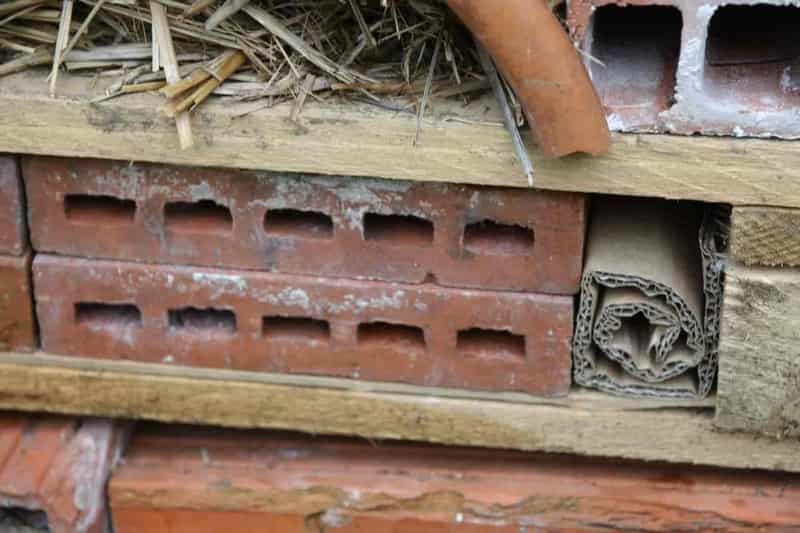
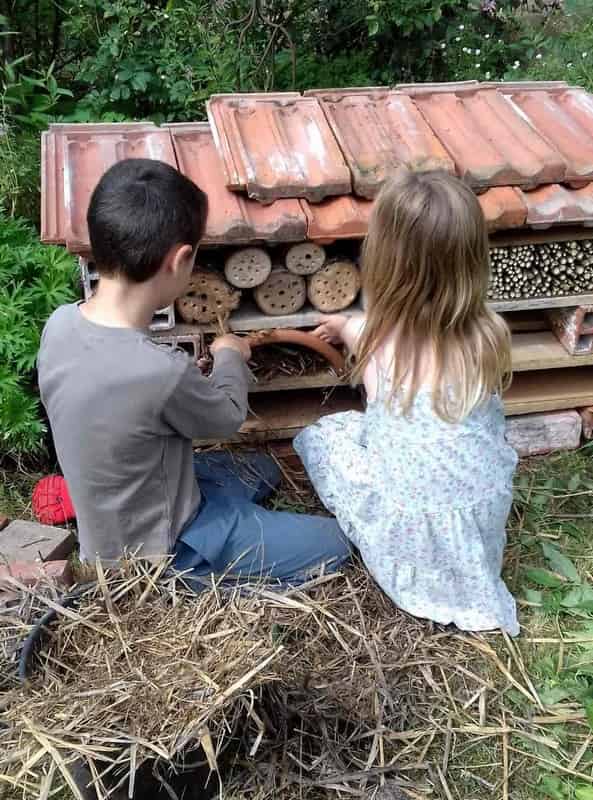
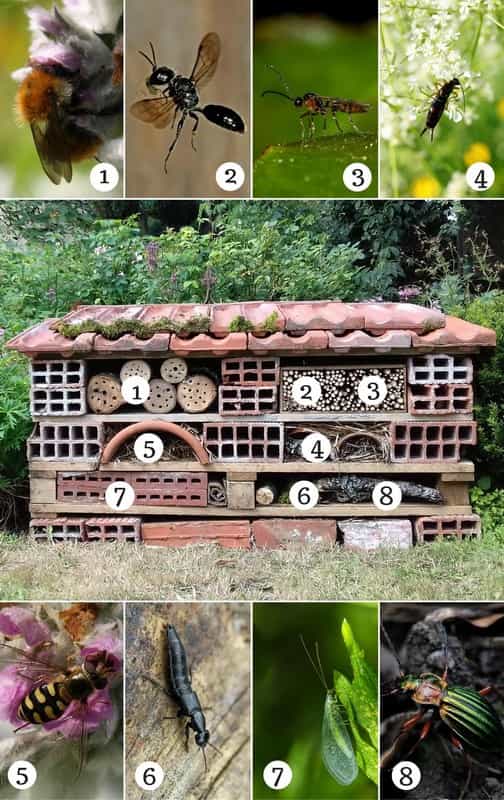
Comments